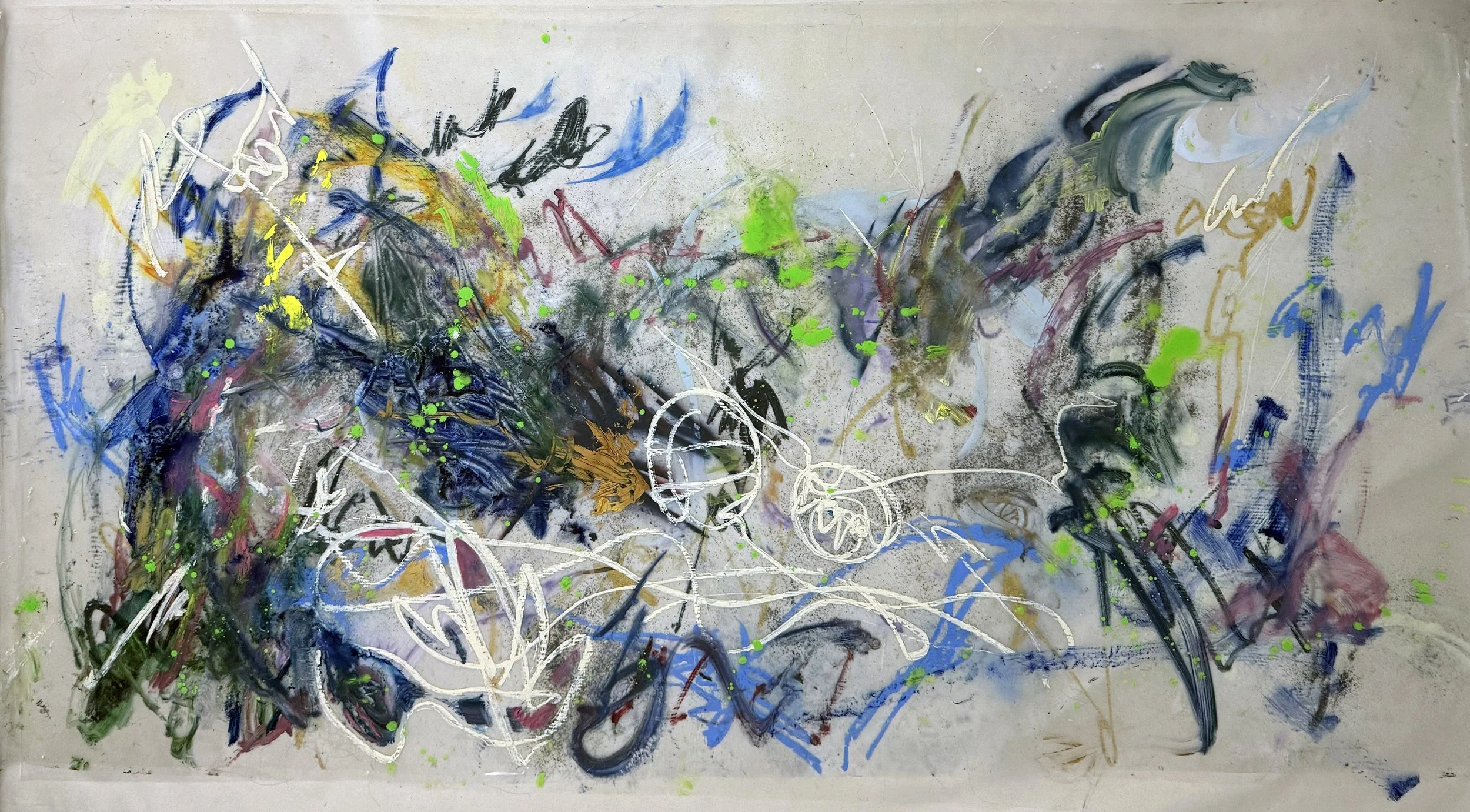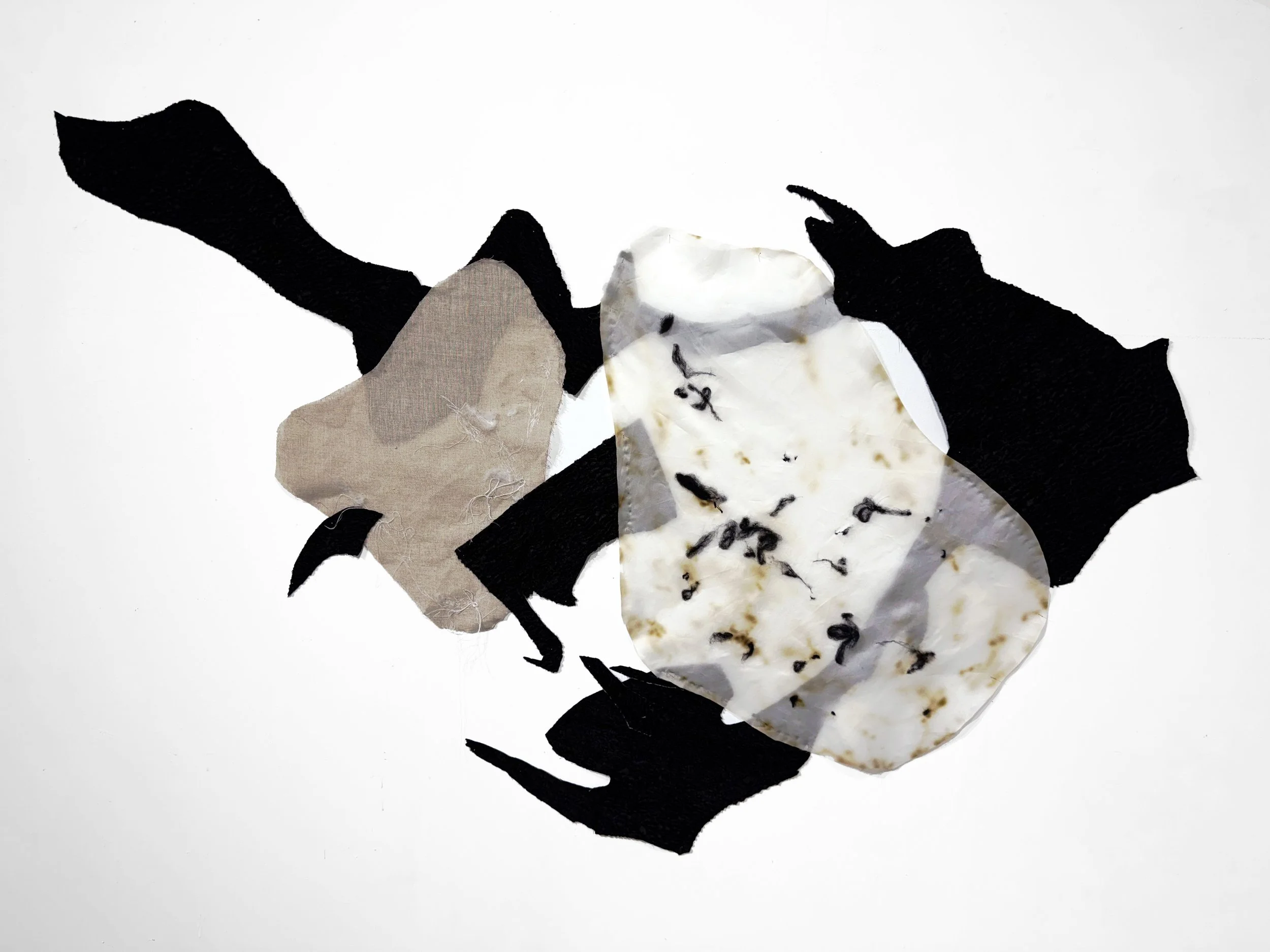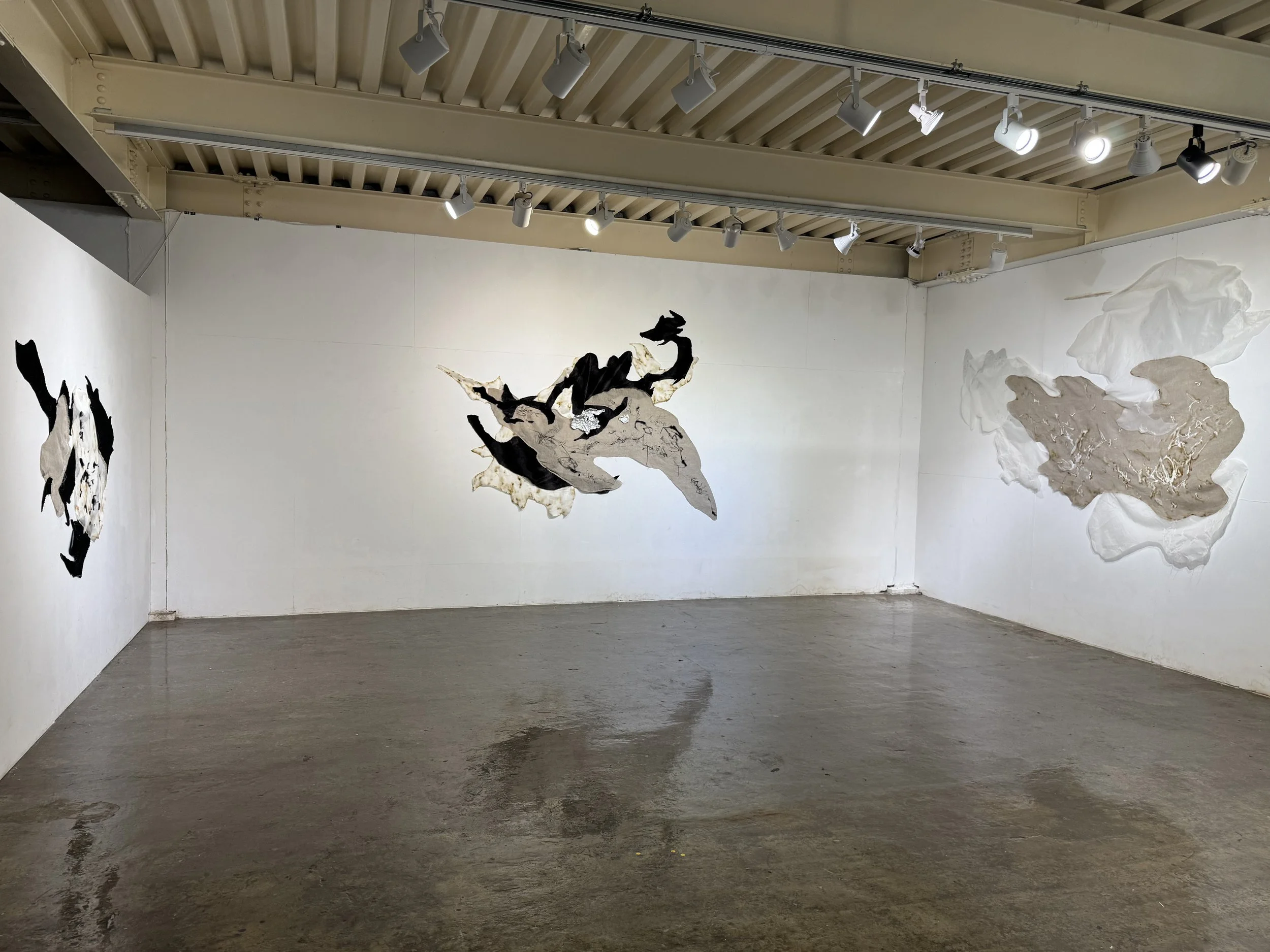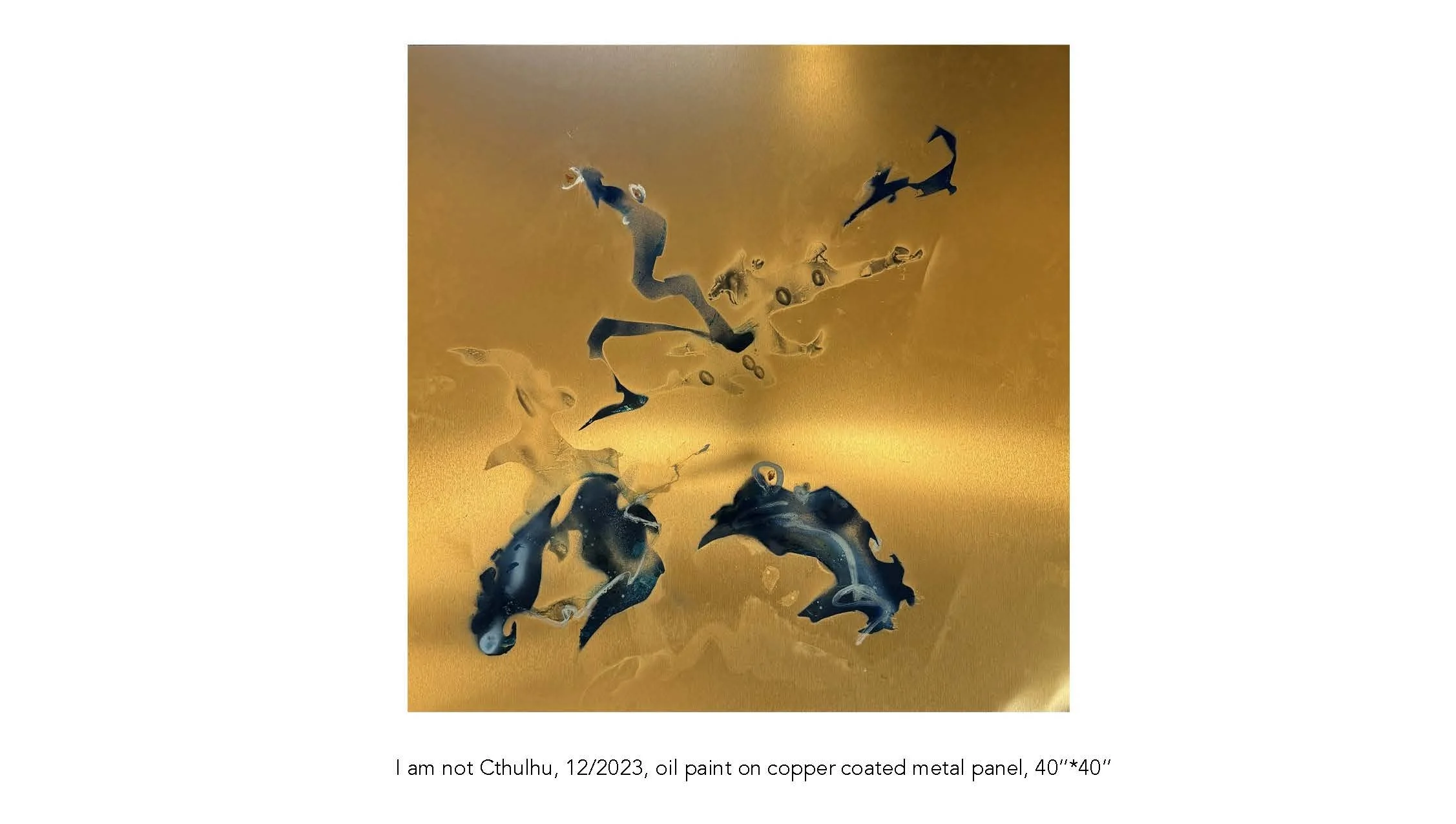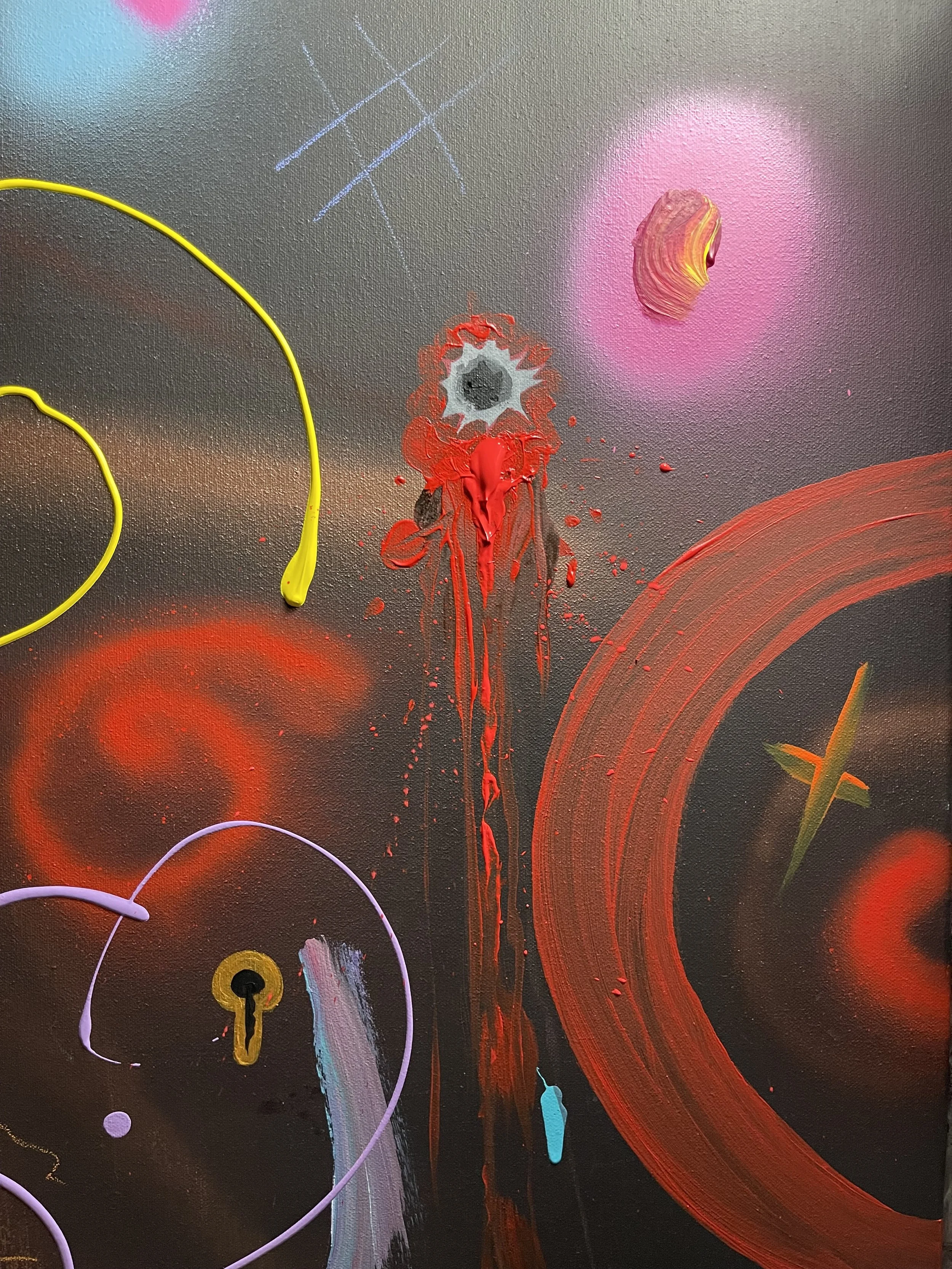Interview with Yang Lu
Your portfolio demonstrates a profound use of diverse materials ranging from wool and resin to more unconventional media like coffee grounds and micro glass beads. Can you discuss how your choice of materials influences the thematic or philosophical underpinnings of your work?
Each material I choose brings unique properties that evoke specific emotions and associations in the viewer, supporting both thematic and formal exploration. Wool, for instance, acts as an organic medium that conveys warmth and comfort, evoking ideas of nature. Coffee grounds, with their rich texture and aroma, encourage viewers to reflect on traditional boundaries of art by repurposing familiar, everyday materials in unexpected ways. Resin and glass beads, on the other hand, carry a more synthetic quality, often linked to technology and modernity. Together, these organic and inorganic materials create a dialogue between nature and the artificial, between the transient and the permanent, adding a layer of visual and conceptual tension.
The varied materials enhance not only the visual experience but also evoke a sensory depth that resonates on multiple levels. I hope the emotions my work inspires are multidimensional—engaging more than just sight to create a multisensory experience. By contrasting and varying materials, I aim to spark a "tactile" response, prompting viewers to connect with the work through a blend of psychological and sensory impressions. This approach fosters a more immersive and impactful bond between the viewer and the artwork.
In pieces like "Transformation" and "Zen II - Path," there seems to be a complex interplay between the abstract and the tangible. How do you navigate the boundary between these elements in your creative process?
In works like Transformation and Zen II – Path, the process of moving between abstraction and tangibility is a journey that balances intuition with structure. To me, all concepts are abstract, as are human thoughts. Yet, when we transform an intangible idea into a work of art in the material world, "form" inevitably emerges. This form often becomes repeated in artistic creation, establishing a set of habits and rules. My aim, then, is to use boundless imagination to break through these "boundaries of form" in the material world, creating something entirely new that challenges past conventions or common perceptions.
In practice, I see abstraction as a space for conceptual exploration—ideas of change, stillness, and impermanence. These abstract themes serve as a foundation, guiding the work’s emotional tone and symbolic depth. The tangible aspect, in contrast, is where these concepts meet the material world. It’s expressed through materials, textures, and forms, each chosen for its sensory qualities and symbolic associations. By keeping some elements open-ended and others concrete, I strive to find a balance that best interprets the theme.
“Visualization of the Wind" employs laser cutting technology on acrylic. What role does technology, particularly digital techniques like 3D printing and laser cutting, play in your artistic expression?
For me, technologies like laser cutting and 3D printing are powerful tools that combine art and technology, opening new ways for creative expression. By integrating these digital techniques, I can expand the possibilities of form, precision, and material, breaking the conventional boundaries of art. In works like Visualization of the Wind, laser cutting on acrylic allows me to translate intangible elements, like movement and flow, into precise, tangible forms. This approach emphasizes that art is not static; it needs to evolve with the times. By embracing technology, I’m able to explore concepts in ways that wouldn’t be possible with traditional methods, pushing art forward into new, uncharted territories.
Could you share how your education at the School of the Art Institute of Chicago and your experiences in exhibitions across different cultures have shaped your artistic vision?
I am grateful for the experience of studying at SAIC that creates an environment for interdisciplinary arts exploration. Even as a student in the Painting and Drawing department, I was able to take classes in the Sculpture, Art and Science departments to be exposed to and learn different techniques and ideas. This has greatly enriched my creative endeavors and broadened my horizons.
For me, art is a language that transcends the limitations of human language, offering a more intuitive way to express ideas. When my work is exhibited in different cultural contexts, it surpasses linguistic boundaries, serving as a direct visual expression. These experiences of showcasing my art in various countries and regions have encouraged me to create works that resonate on multiple levels—both conceptually and visually—allowing for broader interpretation and dialogue. They have also inspired me to incorporate materials, techniques, and symbols that reflect a more inclusive and global narrative, enriching my creative practice.
You've mentioned that elements of chance and randomness are integral to your work. How do you incorporate these elements, and what do they reveal to you about the nature of creativity?
In my work, I embrace elements of chance and randomness as a way to break free from rigid control and allow for unexpected outcomes. Because creativity is not only about intention and precision but also about embracing the unknown. Chance can open up new possibilities and insights that wouldn't emerge through purely planned processes.
There are two distinct phases that require deep thought in my creative process. The first phase happens before I start creating, where I reflect on the concepts, emotions, and questions I want to explore in the work. Once I’ve clarified my ideas, I move into the second phase, where I begin the actual creation. Here, I translate my thoughts and reflections into feelings, which I then express using my own abstract symbols. This part of the process is highly intuition-driven. I immerse myself completely and stay open to any random visual effects that might emerge.
As the piece progresses, I start to make more deliberate artistic decisions. I continuously assess the composition, focusing on finding an aesthetic balance. This is where I begin to make conscious choices about what elements to keep and what to adjust, ensuring that the piece reaches its natural state of equilibrium. In essence, my creative process is a blend of embracing randomness and making thoughtful, deliberate decisions. These two aspects are intertwined and complement each other throughout the creation of my work.
Much of your work, such as the series "Zen I - Maya" and "Zen IV - Desire," appears deeply connected to philosophical themes. How does philosophy inspire your artistic process and the themes you choose to explore?
Philosophy has profoundly influenced my approach to abstraction in my artwork. For example, Zen’s emphasis on embracing the present moment and accepting the natural flow of life without resistance aligns perfectly with my creative process. In my Zen series, for example, I explore the harmonious coexistence of form and chaos. The spontaneous, unplanned lines that emerge during the creative process reflect Zen’s concept of living in the present—each moment unique and unrepeatable.
My approach to abstraction is intuitive and fluid, allowing randomness to guide the creation. I don’t impose strict rules or predefined forms; instead, I trust that out of the apparent chaos, an inner order will emerge. This mirrors Zen philosophy, which teaches that true understanding and beauty arise when we relinquish control and allow things to unfold naturally. In works like Zen serie I celebrate the unpredictable grace and flow of creation, inviting viewers to experience the balance between chaos and order, just as Zen teaches us to find peace in the balance of life. Philosophy, in this sense, is not only a source of inspiration but also a guiding force that connects my exploration of abstraction to a deeper understanding of existence and beauty.
When creating multidimensional pieces like "Life, Death and Nirvana," what are some of the most significant challenges you face in the layering and textural dynamics, and how do you overcome them?
One of the biggest challenges I face when creating multidimensional pieces is having enough patience and trust to let the process unfold naturally. Take this piece as an example; it is a large, three-layer work. Since I build the layers one at a time, I don’t know what the final result will look like until all three layers are combined. This unpredictability requires a great deal of patience and trust in the process, as each layer must be completed without seeing how it interacts with the others.
To navigate this, I focus on controlling the effect of each layer individually while intentionally resisting the urge to view the layers together during the creative process. This adds an element of suspense and trust. To further introduce randomness and spontaneity, I incorporate a blind drawing technique, adding intuitive line patterns that emerge organically. This approach is risky, as I can’t predict how the lines will interact with the layers below, but it forces me to rely entirely on my intuition and technique. Although it’s a delicate balance, the result proved that it was all worth it.
As an artist known for blending various artistic disciplines, where do you see the future of interdisciplinary art heading, especially in an increasingly digital and globalized art world?
In fact, I believe that with the development of technology, interdisciplinary art is an inevitable trend that will become more and more popular. In today’s increasingly digital and globalized world, the rigid boundaries between artistic disciplines are less relevant. Art should be about expressing the artist's voice and perspective in the most appropriate and impactful form, without being confined to traditional categorizations.
As an interdisciplinary artist, my work is sometimes seen as "uncategorized," with some views suggesting that it is neither sculpture, nor painting, nor fiber art—it seems impossible to classify based on traditional fields. However, "interdisciplinary" offers a solution, providing a more flexible creative environment where artists don't have to struggle with how to categorize their work. What kind of work it is becomes less important; it can be classified as "interdisciplinary," redirecting the focus back to the essence of the piece. This will grant artists who combine different techniques and media the freedom to create innovative works.
How has your artistic style and approach evolved from your early works to your most recent exhibitions, such as "Contours of Chance" at CICA Museum?
My artistic style and approach have evolved significantly from my early works to my most recent exhibitions, like Contours of Chance at the CICA Museum. Initially, my work involved experiments with materials, such as painting on metal plates. At that time, I was still confined to the two-dimensional space, and the idea of breaking those boundaries hadn't fully emerged.
When I was introduced to the concept of interdisciplinarity and learned new techniques, I realized the potential of combining different materials to give my work a three-dimensional effect while maintaining its aesthetic appeal. This shift allowed me to explore the full range of creative possibilities, leading to more experimental and dynamic compositions.
My solo exhibition Contours of Change marked a significant turning point, as I fully embraced interdisciplinarity. I began to free my work from traditional categorization, focusing more on expressing the core creative idea without the constraints of specific mediums. This move allowed me to explore a wider array of materials and techniques, and I continue to learn and experiment, constantly evolving and pushing my artistic boundaries.
Your works invite viewers to explore the depths of perception and meaning. What do you hope your audience takes away from your art, and how do you gauge their responses to your work in different cultural contexts?
I hope my work inspires viewers to listen to their inner voice, pursue their ideas, and embrace the unknown without fear. By engaging with art that doesn’t fit into a single category or adhere to traditional concepts, I aim to encourage audiences to embrace the uncertainties and complexities of life, explore beyond the familiar, and discover their inner world.
I believe that when artists free themselves from the constraints of categorization, they can create with greater freedom and authenticity. This is why my work intentionally challenges traditional notions of beauty, breaking down the boundaries between different artistic disciplines. By doing so, I can explore new forms of expression and present art in a way that is not confined by conventional definitions.
Ultimately, I hope my work resonates with individuals on a personal level while contributing to the broader development of interdisciplinary art. My goal is to push the boundaries of what art can be and how it can be experienced, encouraging artists and audiences from diverse cultural backgrounds to engage with creativity in a more open and exploratory way.


